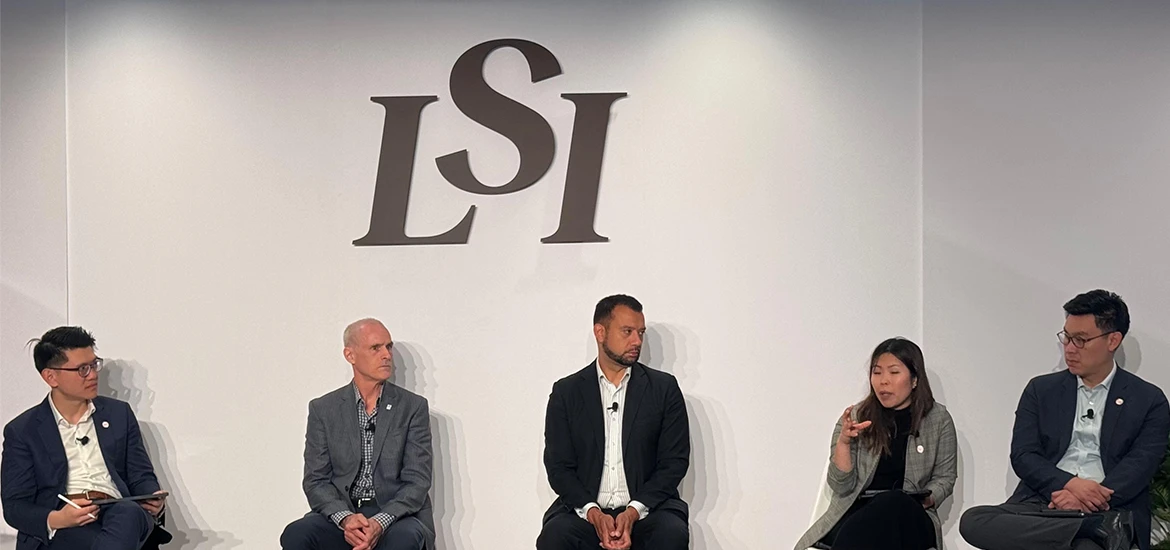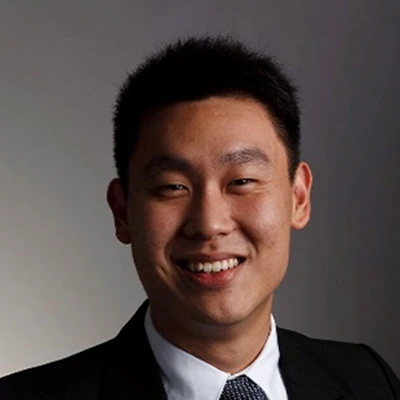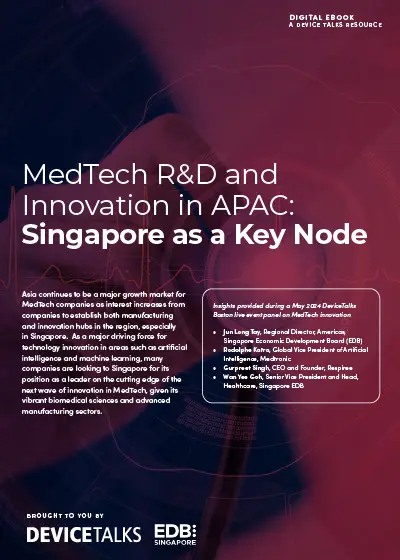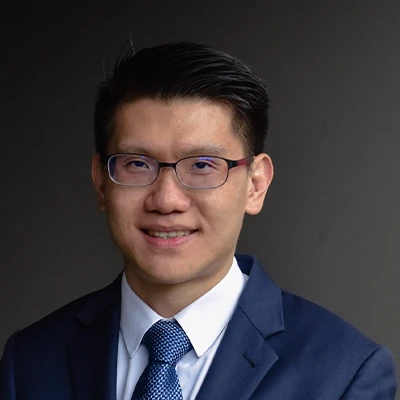Panellists from EDB, EnterpriseSG, Luminoma Diagnostics, and TripleRing Technologies spoke about opportunities for MedTech in Asia
A look at how global healthcare leaders use Singapore as a base to scale faster, collaborate smarter, and build future-ready businesses.

Panellists from EDB, EnterpriseSG, Luminoma Diagnostics, and TripleRing Technologies spoke about opportunities for MedTech in Asia
Global medical technology (MedTech) companies now see Asia through a different lens. No longer just an end market, Asia is where leading players are investing in innovation, manufacturing, and supply chain capabilities to deliver products tailored to the region’s growing and diverse healthcare needs. At the Life Science Intelligence (LSI) USA Emerging MedTech Summit held in California in March 2025, speakers from EDB, Enterprise Singapore (EnterpriseSG), Luminoma Diagnostics, and TripleRing Technologies shed light on what is driving this momentum towards Asia.
Asia makes up 60 per cent of the world's population. By 2030, one in four people in the region will be above the age of 60, and are likely to require treatment for chronic medical conditions. Currently the second-largest market globally, Asia’s MedTech sector is expected to grow at 10.5 per cent annually until 2030.
“Asia presents both a growth opportunity and a resilience strategy for global healthcare companies.”

John Eng
Vice-President of Healthcare
EDB
Beyond exporting to Asia, panellists noted that companies building operations, developing innovations, and scaling in the region are looking for:
"Companies consistently set up in Singapore as their Asia-Pacific (APAC) entry point," said John Eng, EDB’s Vice-President for Healthcare. "Growth potential, business stability, and talent access are the reasons we hear most often."

Singapore’s MedTech sector is part of its thriving biomedical sciences ecosystem, built on more than two decades of government investment. Its stability, consistent regulatory frameworks, pro-business governance and strong global connectivity allow companies to operate safely, smoothly and efficiently from Singapore.
Top companies like Edwards Lifesciences, Leica Microsystems, Biotronik, ResMed and WS Audiology have anchored a full suite of activities in Singapore, including manufacturing, research and development (R&D), and regional headquarters.
“Singapore is where some of our companies run their
globally best-performing operations."

Chin Jie Lim
Americas Regional Director
EDB
Complementing these qualities is Singapore’s diverse talent pool. The country's 16,900 MedTech professionals comprises highly-skilled technicians, scientists and researchers working across more than 400 global and local enterprises. Educational institutions also produce over 25,000 Science, Technology, Engineering, and Mathematics (STEM) graduates yearly.
"Singapore is well equipped to support access for foreign MedTech companies," says Charlene Yong, Regional Director, West US at EnterpriseSG. "Whether you're finding clinical partners or contract manufacturers, it's built to support fast, focused growth."
Singapore’s MedTech manufacturing output reached S$19.4 billion in 2023, with over 35 manufacturing plants operated by global MedTech leaders. Its 2,700+ precision engineering firms and Electronic Manufacturing Services (EMS) providers offer MedTech companies immediate access to manufacturing capabilities without building infrastructure from scratch. This robust supplier ecosystem allows companies to rapidly prototype, refine designs, and scale production, while maintaining the rigorous quality standards. This pool of reliable contract manufacturers also acts as an extension of their R&D operations, enabling shorter launch timelines.
Leading microscopy and scientific instrumentation company Leica Microsystems taps local suppliers for high-precision components for its global production of surgical microscopes.
MedTech companies often face regulatory complexity and fragmented approval processes. Singapore has tailored regulatory pathways that reduce friction for companies conducting research and clinical validation, while maintaining the necessary rigour. This is a crucial advantage for companies handling sensitive intellectual property (IP), data, and regulatory requirements.
Singapore ranks among the top five globally for IP protection and is complemented by a robust regulatory process overseen by the Health Sciences Authority (HSA). HSA, the national regulator of health products in Singapore, is a World Health Organization listed authority and was the first to have achieved the highest level of ML4 in its classification regulatory authorities for medical products. It is also aligned with international standards, enabling companies to use Singapore approvals as a springboard into other ASEAN markets.
" Companies choose Singapore because of
our reputation for trust and quality."

Chin Jie Lim
Americas Regional Director
EDB
HSA takes a risk-based approach to medical device registration, offering multiple evaluation routes based on a device’s risk level and prior approvals from regulators like the US Food and Drug Administration. Lower-risk devices face minimal regulatory hurdles, and higher-risk ones can benefit from expedited reviews if they’ve already been proven safe elsewhere. HSA also supports early engagement through its Pre-market Consultation Scheme, allowing companies to align with regulators before submitting — reducing rework and speeding up time-to-market across Singapore and the wider region.
Singapore's access to some of Asia's most comprehensive, high-quality multi-ethnic clinical data enables companies to develop solutions tailored to the region's diverse healthcare needs from day one. This eliminates the need for time-consuming adaptation after initial product development.
Firms like NovogeneAIT and public research institutes are collaborating with multinational players to conduct targeted clinical research to understand genetic variations, disease patterns, and treatment responses across different Asian ethnicities.
The convergence of MedTech, diagnostics, and digital health is reshaping how healthcare solutions are developed. Maher Khaled, CEO of Luminoma Diagnostics, shared how his team is applying Raman spectroscopy for non-invasive skin cancer detection — an example of how device engineering and clinical data science are increasingly interconnected.
Ryan McGuinness, Commercial General Manager at Triple Ring Technologies, observed that mission-driven healthcare innovation increasingly relies on global collaboration. He noted that partnerships which cross regulatory, geographic, and technical boundaries are essential to fill innovation gaps and scale sustainably.
"New medical devices and innovations need the right partners for validation and scaling," Yong adds. "Singapore connects you to both clinical networks and broader Southeast Asian markets."
Companies access clinical validation and production support through partners in Singapore like the National Healthcare Innovation Centre (NHIC) and MedTech Catapult to bring products to market.
NHIC is a nationally appointed programme office that works with public health institutions across Singapore to identify and commercialise promising clinical innovations. NHIC funds the translation and development of medical innovations towards a market-ready product and provides strategic guidance and connection to industry partners.
Similarly, the S$38 million MedTech Catapult is a national initiative hosted by the Agency for Science, Technology, and Research (A*STAR) that aims to accelerate the development of MedTech products in Singapore. Part of MedTech Catapult's mandate is to identify novel high-value MedTech projects and empower the local MedTech ecosystem to translate IP into commercial products. MedTech Catapult offers dedicated in-house product development and product management capabilities, supported by a team of multi-disciplinary engineers and experts in quality, regulatory, and clinical affairs.
"Singapore’s MedTech ecosystem allows companies to scale quickly and has the relevant players to support both productisation and market entry.”

Charlene Yong
Regional Director
West US, Enterprise Singapore
Singapore’s enabling ecosystem helps manufacturers stay competitive through innovation, R&D and workforce transformation. Learn how Singapore’s MedTech ecosystem supports global manufacturers seeking growth and impact.